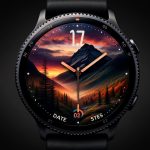The latest findings from MITRE Corporation’s ATT&CK evaluations offer a comprehensive assessment of enterprise cybersecurity solutions’ effectiveness against prominent ransomware strains and sophisticated Mac-targeted malware. This evaluation is crucial as organizations increasingly depend on diverse operating systems like macOS, which face unique security challenges. The study not only highlights the current landscape but also underscores the evolving strategies employed by cyber adversaries.
Recent evaluations have expanded their focus to include macOS, a shift from earlier assessments that predominantly concentrated on Windows environments. This change reflects the growing adoption of Apple devices in corporate settings and the corresponding need for tailored security measures. By incorporating macOS, MITRE addresses previously underexplored vulnerabilities, providing a more holistic view of the cybersecurity landscape.
How effective are vendors in detecting malicious activities?
The evaluation revealed that detection rates among the 19 assessed vendors varied significantly, with some failing to accurately identify ransomware activities. William Booth, general manager of MITRE’s ATT&CK evaluations, highlighted that certain vendors experienced higher false-positive rates, indicating challenges in differentiating between legitimate and malicious system behaviors.
“Some vendors had higher false-positive rates than detection rates, which indicates a need to better distinguish legitimate activity from malicious activity,”
Booth stated.
What testing methods did MITRE employ in the evaluation?
MITRE implemented a two-phase testing approach, beginning with an initial emulation of malicious activities to establish baseline detection capabilities. After allowing vendors a day to adjust configurations, a second phase assessed their enhanced protection measures against new, unseen threats. This methodology aims to evaluate not just the immediate response but also the adaptability of cybersecurity solutions to evolving cyber threats.
Why was macOS included in this round of evaluations?
Including macOS marked a significant expansion of MITRE’s evaluation scope, addressing the limited public cyber threat intelligence available for Apple systems. Booth noted that constructing realistic emulation scenarios for macOS was challenging due to the scarcity of publicly available data on Mac-targeted malware.
“MacOS was a bit tougher because there’s not a lot of public CTI on that,”
Booth acknowledged. Nonetheless, this inclusion is essential as more organizations utilize Apple devices, requiring robust security measures tailored to macOS environments.
The evaluation underscores the critical need for cybersecurity vendors to refine their detection algorithms and reduce false positives, thereby enhancing overall protection efficacy. Additionally, the incorporation of diverse operating systems like macOS into security assessments reflects the dynamic nature of cyber threats and the necessity for comprehensive, adaptable security solutions. Organizations can leverage these insights to select cybersecurity products that align with their specific IT infrastructures and risk profiles.










